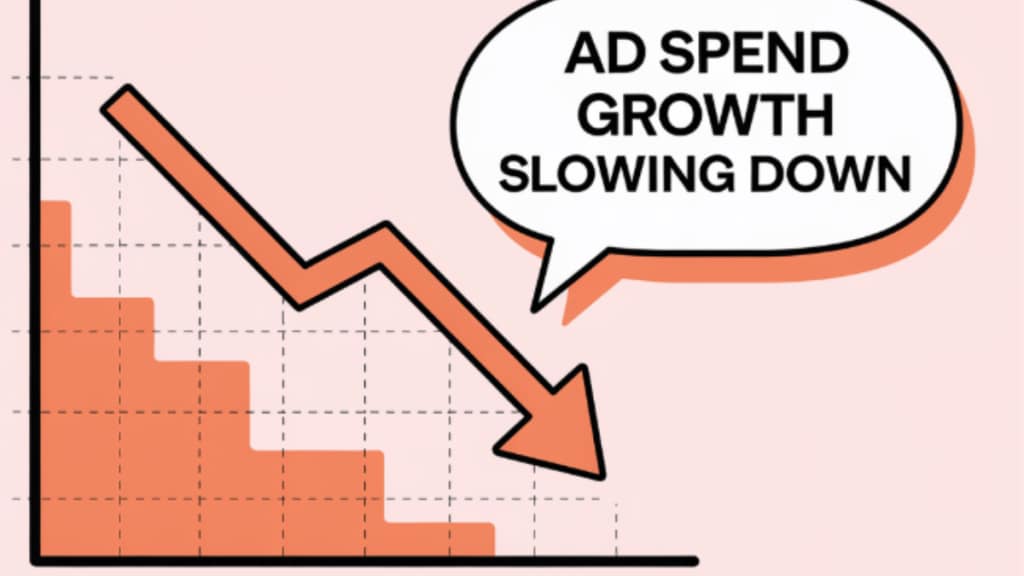We are exposed to as many as 10,000 ads a day. In meme terms, advertising has been serving as the mitochondria that fuel the brand growth. How often have you heard a brand’s name and the jingle plays in your mind? Ads. How often have you recognised the girl with bob-cut hair and instantly thought of Amul? Ads. The sight of melting chocolate reminds you of Dairy Milk Silk? Ads. For decades, companies have spent heavily to capture consumer attention, using everything from billboards to prime-time TV slots. With the digital age in the picture, the platforms to showcase ads have dramatically increased giving the brands more ground to play in. Yet, despite the rise of online platforms and targeted marketing, the latest Pitch Madison Advertising Report 2025 reveals a surprising slowdown in ad spending.
India’s ad market grew by just 9% in 2024, marking its slowest expansion since 2017 (excluding the pandemic-induced slump of 2020). Digital advertising grew by 14%, a one per cent 15% fall from 2023 and 20% since 2022. Meanwhile, traditional media, once the dominant player, saw a sluggish 6% growth. Even the festive season, which typically drives a surge in advertising, failed to lift overall spending, with Q3 growing by just 1% and Q4 by 2%.
HUL vs. Hotstar: A battle over ad value
One of the biggest indicators of this shift is the ongoing standoff between Hindustan Unilever Limited (HUL) and Disney+ Hotstar over IPL ad rates. Historically, the Indian Premier League has been a cash cow for advertisers, promising massive reach and engagement. But this year, HUL, one of India’s largest advertisers, is pushing back against the high costs of IPL advertising, signalling a deeper industry-wide concern. Sources suggest HUL isn’t convinced that Hotstar’s premium pricing translates to effective returns. If an industry giant like HUL is questioning the cost-effectiveness of marquee ad slots, what does that mean for the future of high-profile advertising? “The truth is TV spending will decline due to the availability of digital platforms, where the same TV content is watched. It is the industry’s lack of collective will and intent that is preventing the establishment of a neutral, agnostic, and independent measurement system. When we have such a system, I am sure we will not have claims and counterclaims between HUL and Hotstar.” Gowthaman Ragothaman, founding CEO, Aqilliz, told BrandWagon Online.
Why is ad spending slowing?
Even as digital platforms continue to dominate, brands are spending more cautiously. Several key factors are driving this shift:
Economic uncertainty & rising costs – Inflation and cautious consumer spending have made brands more selective about their marketing budgets. The Reserve Bank of India’s downward revision of GDP growth projections has further added to this cautious approach. “Obviously, the economy is still a bit shaky, and that makes businesses cautious. They’re watching their bottom line and making sure every rupee counts. Inflation adds to that pressure too. With media habits shifting rapidly, brands are under pressure to make every ad dollar count. They’re scrutinising spending, cutting channels that don’t deliver, and focusing on measurable results. Even in digital, where data is abundant, brands are becoming more selective—investing in what truly works, optimising costs, and aligning marketing with business goals,” Menon added.
Changing advertising strategies – Advertisers are increasingly focusing on ROI-driven campaigns, preferring measurable results over broad-reach marketing. Performance marketing, influencer collaborations, and AI-driven targeting are taking precedence. “While it may appear that budgets are tightening, brands are in fact reallocating their investments to digital and OTT platforms, which offer greater cost-effectiveness and measurable impact. Traditionally, core media played a significant role in advertising strategies, but the rise of OTT has led brands to optimize their spending where it delivers the most value,” Vidushi Goyal, chief marketing officer, Swiss Beauty, said.
The fragmentation of consumer attention – Audiences are now spread across multiple platforms—OTT, social media, short-form video, and more. This fragmentation makes it harder for brands to justify high spends on singular platforms like IPL or traditional TV.
“Brands are becoming more ROI-focused, prioritising measurable, performance-driven strategies over traditional and high-cost digital ads. Economic uncertainties and rising ad costs are driving this shift, with AI-powered analytics, influencer marketing, and first-party data enhancing targeting and conversion rates.” Mrityunjay Kumar, chief business officer, Mashrise Private Limited, stated.
TV advertising in decline, Digital ad fatigue on the rise
Traditional media, especially TV advertising, continues to decline, with ad spends growing just 5% in 2024. The number of TV advertisers also dropped from 11,100 in 2023 to 8,650 in 2024. Even digital platforms, while still growing, are experiencing a slowdown as advertisers struggle with increasing costs and consumer ad fatigue.
“Nowadays, people are overwhelmed with a constant flood of content every day,” Jay Rathod, founder and CEO, Koffeetech Communications, commented. “From ads on social media to videos and promotions everywhere they look, it’s easy for them to lose interest. This overload has caused something called ‘ad fatigue,’ where consumers simply stop paying attention or engaging with the content they see,” he added.
The future of ad spending
India’s economy continues to expand, digital adoption is soaring, and consumer markets are evolving—but paradoxically, ad spend is losing momentum. “The stagnant adex in Ecommerce and retail on traditional media indicates a conscious call towards commerce driven marketing. This trend of cautious spending is bound to continue in 2025 as well,” Manpreet Singh Ahuja, chief digital officer and TMT Leader, PwC India, commented. The very platforms that promised limitless reach and precision targeting are now under scrutiny for their rising costs and diminishing returns. “It is the advertising distribution that has changed and will change more,” Ragothaman added. The shift isn’t just about moving from TV to digital; it’s about brands demanding more transparency, better measurement, and tangible impact.


